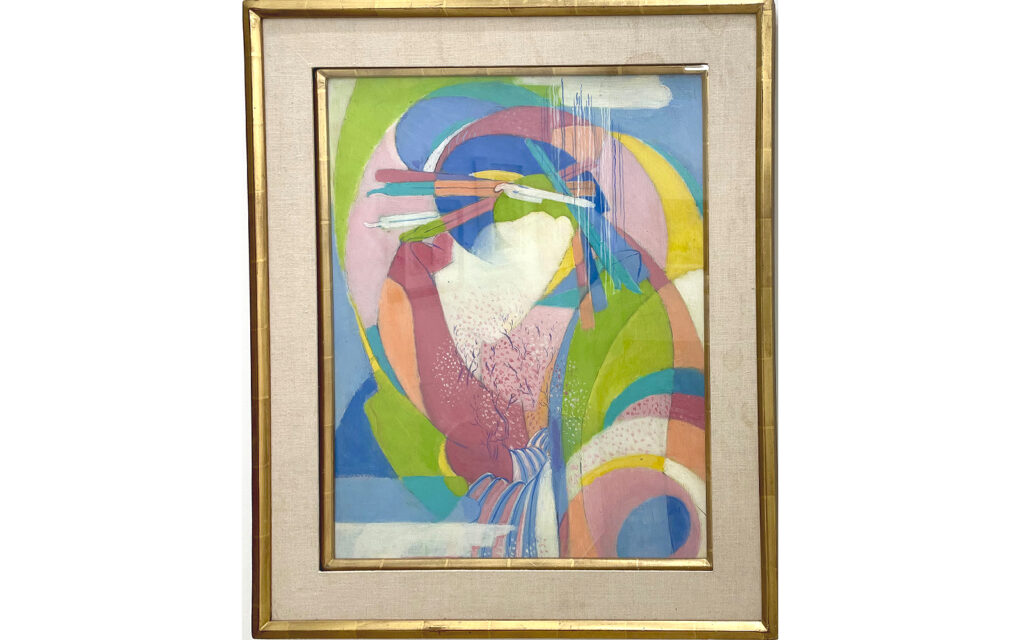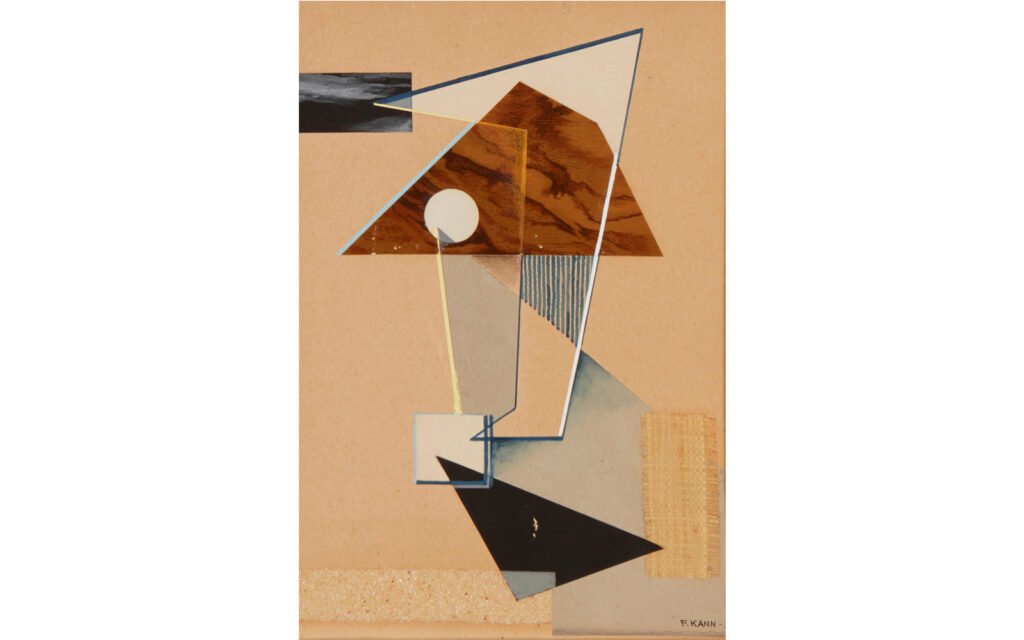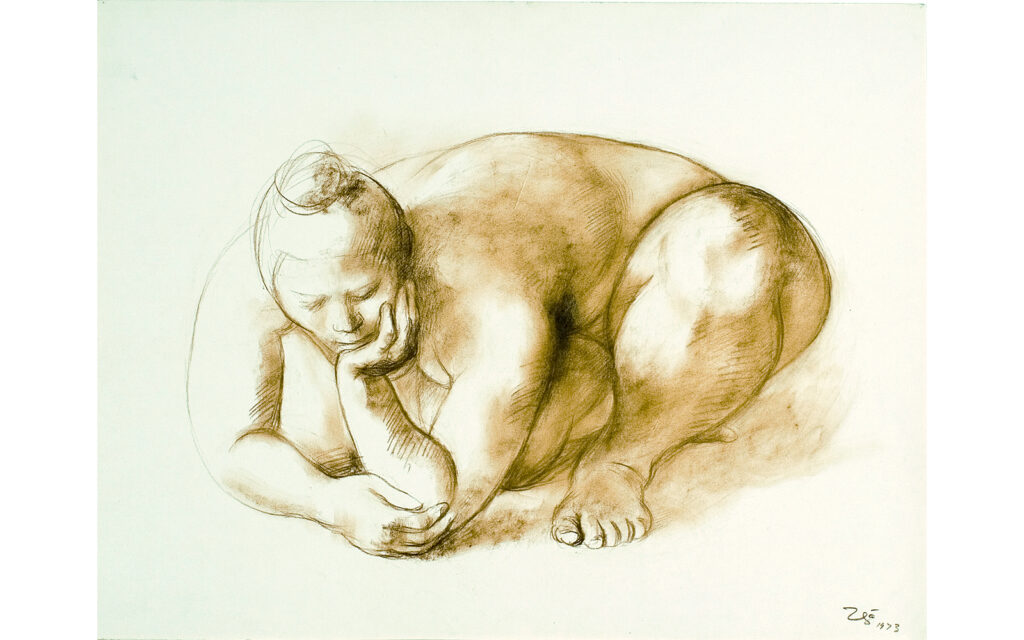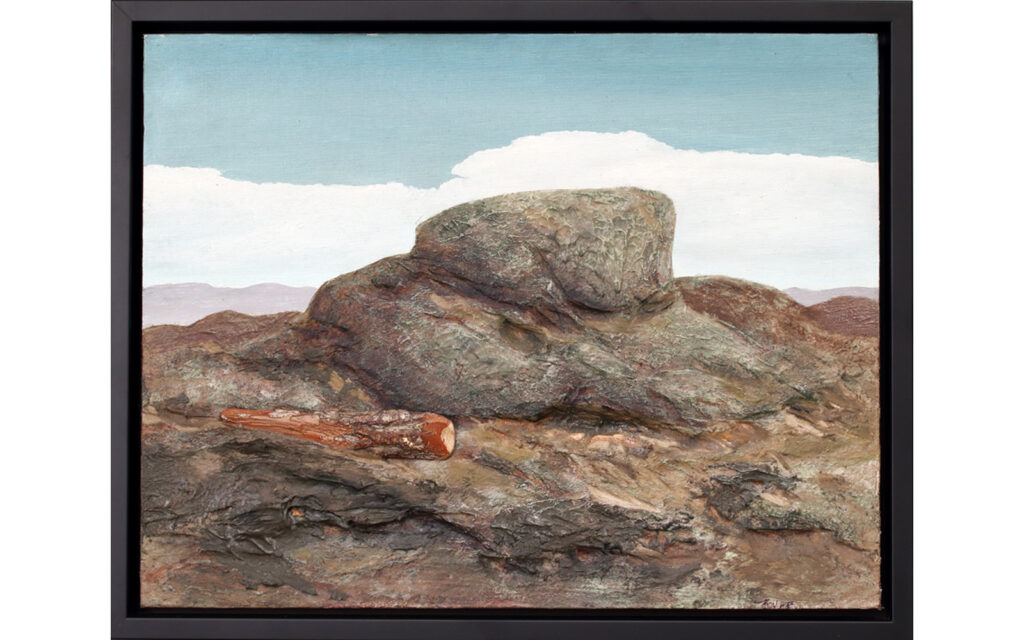“The joy is in the sharing, and what’s particularly gratifying is to expand people’s understanding of the range of what we do,” he said. “There are works of different aesthetics, from non-objective and abstract works to highly representational works. The one connecting element is that every artist and every work in this exhibition is reflective of those that are already part of the canon, in a sense, that they are all collected by museums.”
Rutberg said that while headlines often gawk at multimillion-dollar sales, special works of art can be found when exploring gallery spaces. He added that his hope in presenting his eclectic “Art A to Z” exhibition is that guests will witness the sheer range of accessibility of such pieces, not just aesthetically, but economically.
The artists in the upcoming show include Jordi Alcaraz, Hans Burkhardt, Marc Chagall, Salvador Dali, Max Ernst, Sam Francis, Patrick Graham, Frederick Hammersley, Paul Jenkins, Hugh Kappel, Jack Levine, Peter Milton, George Nama, Claes Oldenburg, Pablo Picasso, Man Ray, Alison Saar, Dorothea Tanning, Jonas Umbach, Maurice De Vlaminck, Ruth Weisberg and Francisco Zuniga.
Rutberg said that beyond the household names like Picasso and Chagall, talents like Stanton Macdonald-Wright and Frederick Kann’s work further illuminates the gallery.

“Departing Spring #8” by Stanton Macdonald-Wright, 1965.
“Kann was European born, exhibited successfully in Paris before moving to New York and was one of the founding members of the American Abstract Group, which was a provocative membership of artists who were championing abstraction in a very conservative time in New York and the art world,” Rutberg said. “He had a gallery that he opened in Los Angeles, we’re talking about the early ’40s … and also had a school here, the Kann Institute of Art.
“His own works were not that well received. These were very conservative environments. … But he was so seminal for so many reasons, and nearly written out of history.”

“Abstraction” by Frederick Kann, 1931.
Deviating from past exhibitions at the Jack Rutberg Fine Arts Gallery, where art typically remains on the wall even after being purchased, the pieces in “Art A to Z” may be taken home by collectors after their sale. The exhibition will be reinstalled over time.
“Being very optimistic, I hope this is a hugely revolving exhibition,” Rutberg said. “We have 27 works of art. … Bemoaning the fact that I could only show a certain number of works aesthetically, this allows me to at least underscore the fact, for those that may not be familiar with the gallery, that our holdings are very broad.”

“Desnudo Reclinado” by Francisco Zuniga, 1973.
Reflecting on the shows that he’s presented since planting the Jack Rutberg Fine Arts flag on Lake Avenue, Rutberg said he has been proud to contribute to the city’s arts and culture scene.
The Jack Rutberg Fine Arts Gallery was born on La Brea Avenue in 1979 before moving to Pasadena in 2022. It has since become a resource for artists, collectors, historians and community members, emphasizing connectivity and education. Last year, the International Art Association USA honored Rutberg with its first Lifetime Achievement Award, calling him a “legendary gallerist” and “genuine Los Angeles treasure” whose exhibitions have served as cultural milestones in the region.
“The Los Angeles art world had its beginnings here in Pasadena,” Rutberg said. “Huge numbers of creative people reside here and have lived here; the history is profound.
“I don’t think of myself as a regionalist — our audience has been international and national, and that includes Pasadena — but I think that the city itself is entitled to boast about its artistic community and holdings.”
Rutberg explained that in any artistic landscape, galleries play vital roles in fostering people’s connection with artworks. They stand apart from museums as they help feed the network of collectors and art dealers that fuel the broader ecosystem.
“Go to the Norton Simon, enjoy the works of art, but come here and take them home,” Rutberg said. “This is for the admiring audience, the person that wants to live with charged objects in their environment. That’s what I’ve always relished, that these things go home with people and have lives, because the only reason they even exist is that there have been those before us that have loved and protected them.

“Thunder Rock” by Llyn Foulkes, 2000.
“Pasadena has never had a dynamic gallery scene. That doesn’t mean that it doesn’t have a dynamic art scene, but galleries are a part of that and I’m hoping that our presence here inspires, perhaps, other galleries to come.”
Rutberg said that he has felt the warmth of the community members that have passed through his doors and has been impressed with the gracious affirmations he has received from people enjoying time with works of art, for the space was designed for people to peacefully develop their own sensibilities. His hope for the future is that more footsteps will grace the gallery’s floor.
“I love it when people come here, whether they’re young students or children with their parents, because it’s a place to have a quiet engagement,” Rutberg said. “(Sometimes) we see the same faces and people come several times, and they never have a feeling of responsibility when they come in. It’s just for pleasure. … We’re in a lobby of a building where people go up and down frequently. They come in from time to time, and it’s a moment of escape as well as a moment of enlightenment.
“I hope to expand the audience more. … All I hope for is that this only becomes more a part of people’s lives here.”


